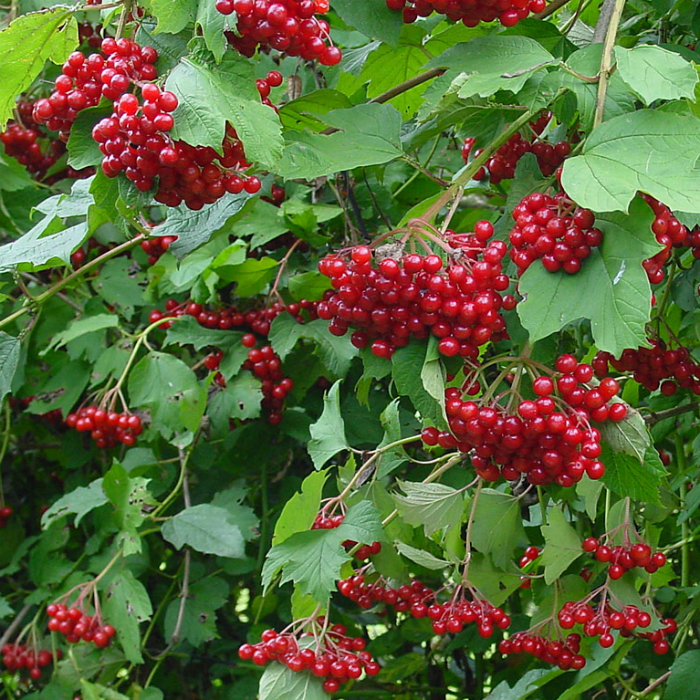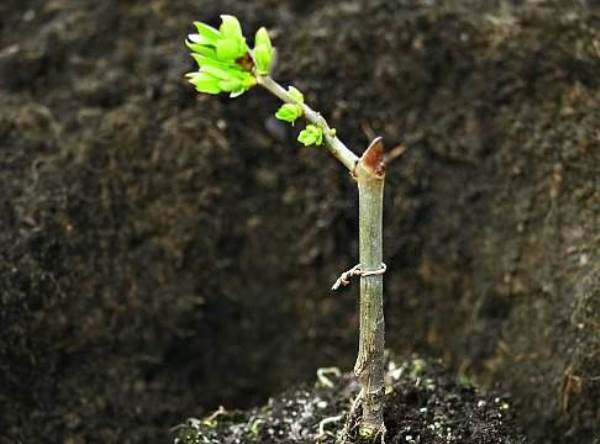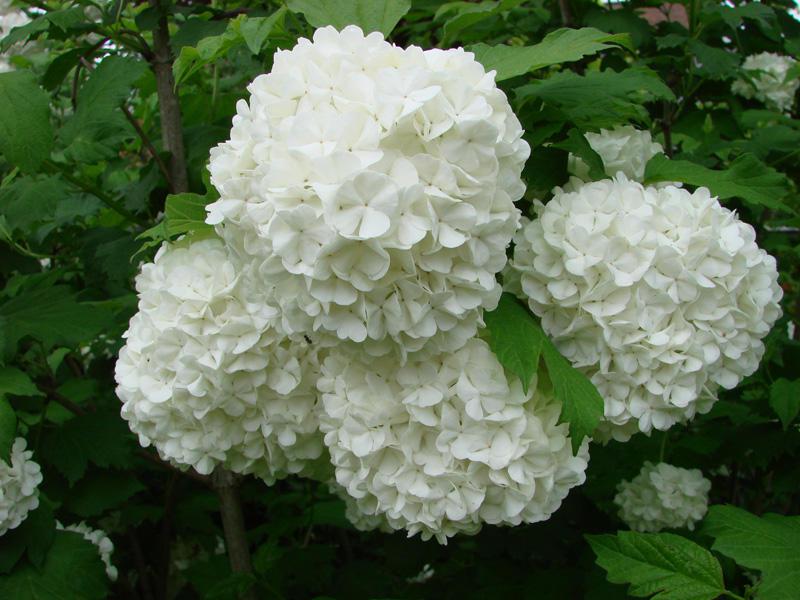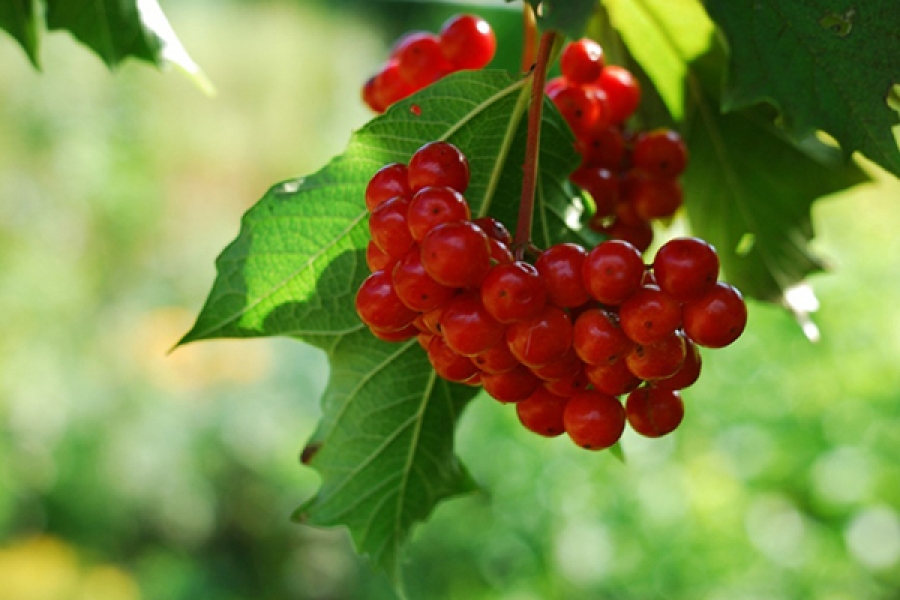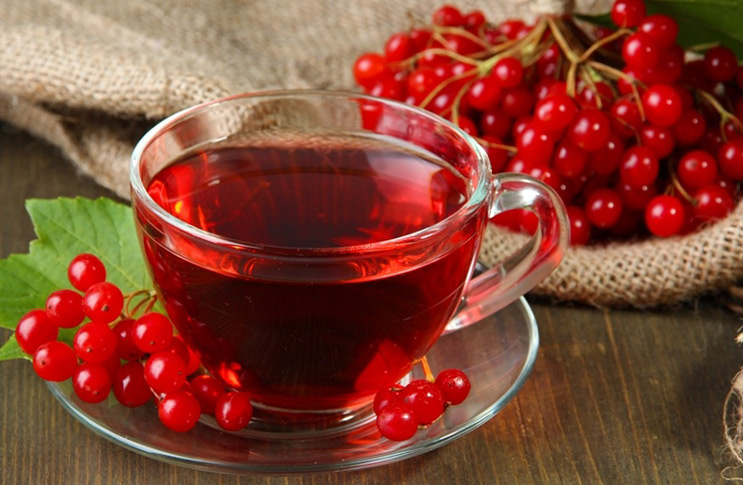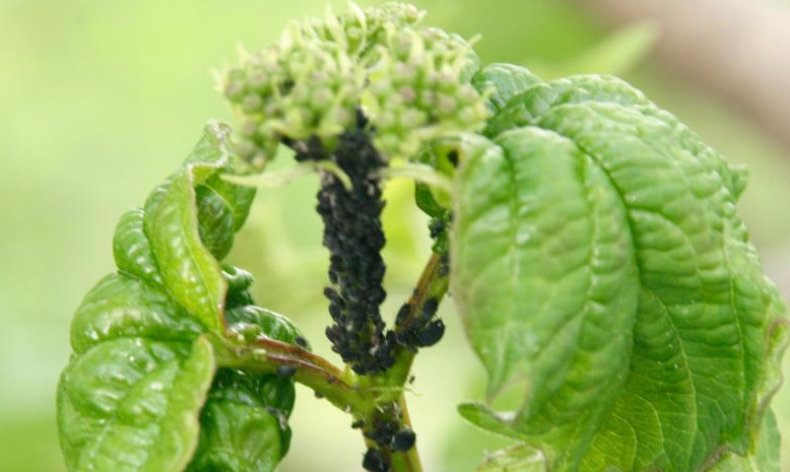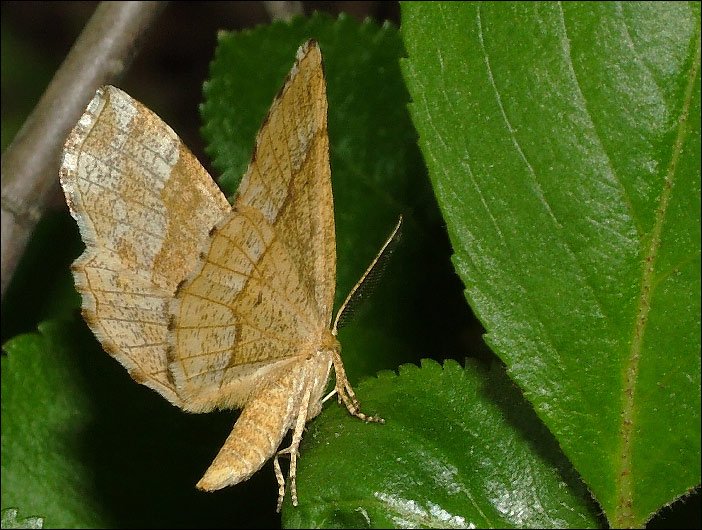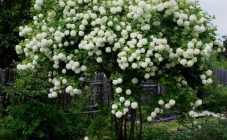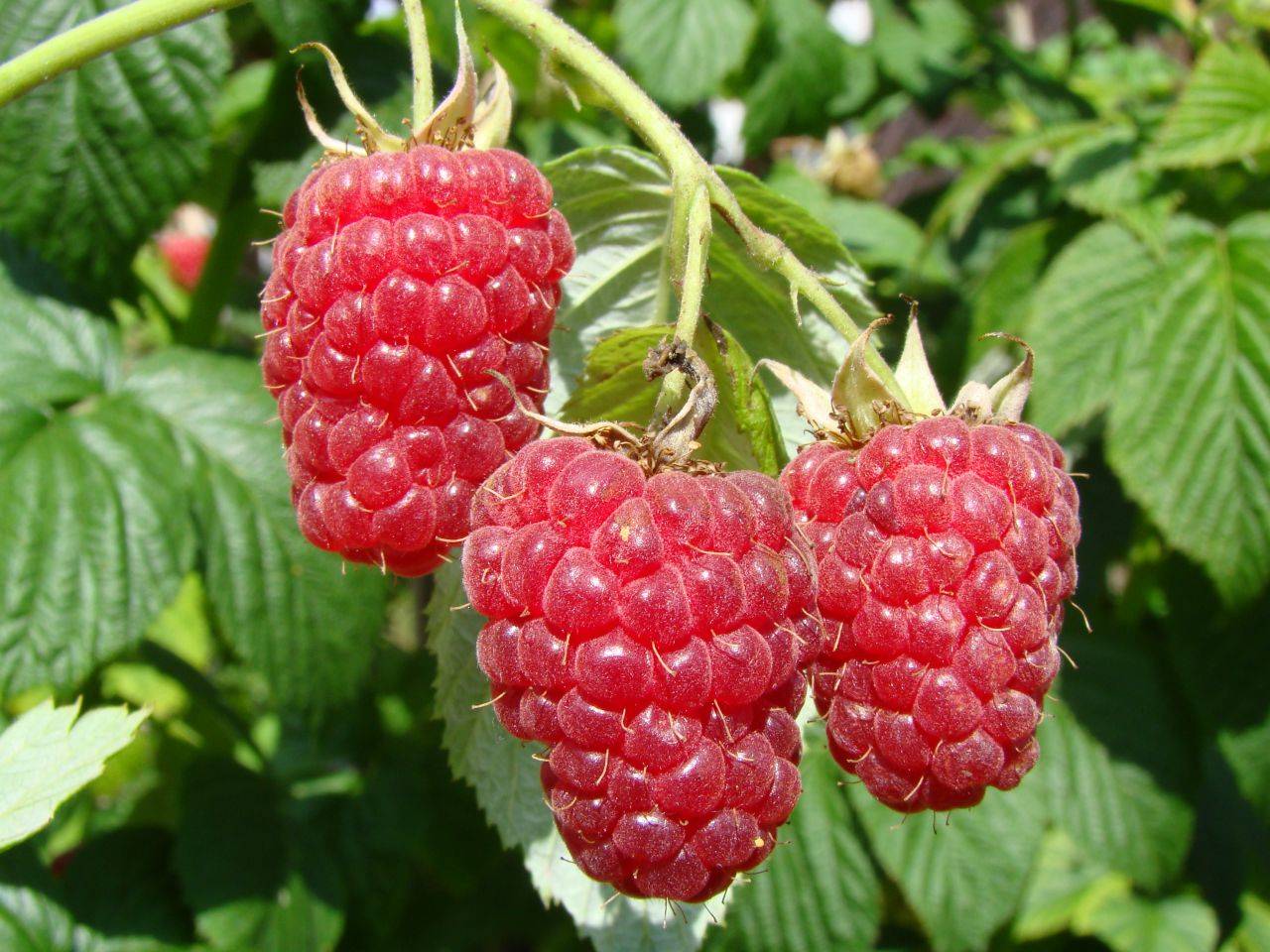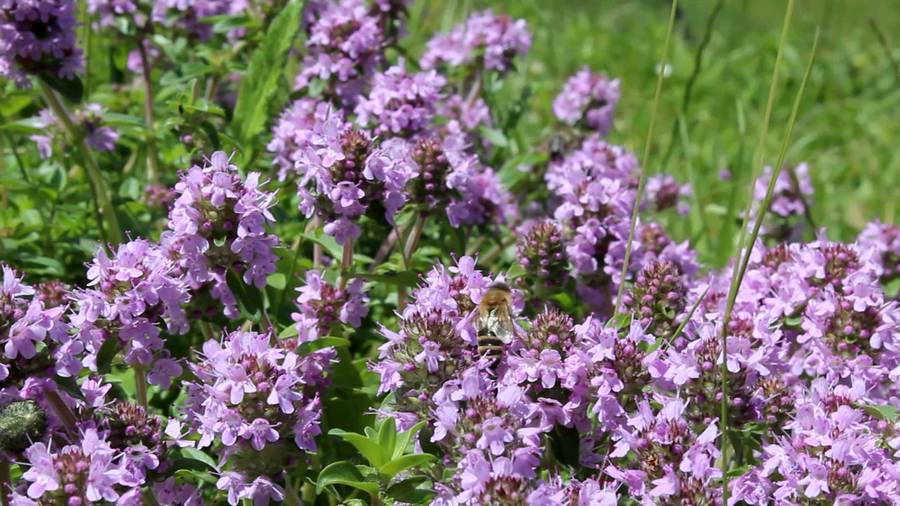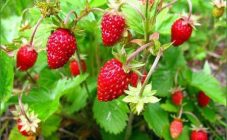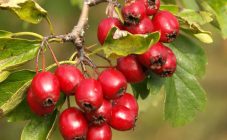Content:
At the word "viburnum", the image of the hero Shukshin from the movie "Kalina Krasnaya" appears in front of many eyes, red brushes appear and a song is heard that the viburnum has matured. This shrub has not only extraordinary decorative qualities, but also healing properties. Viburnum vulgaris easily takes root in gardens, park areas and forests.
Description of culture
Viburnum is a perennial shrub or small tree, reaching a height of 4 m. One can only be surprised at its unpretentiousness and places of its distribution:
- mixed forests;
- broadleaf forests;
- oak groves;
- forest-steppe;
- spruce-small-leaved forests.
Viburnum is a frost-resistant plant, however it also tolerates summer droughts, and grows without problems in wetlands. The soil loves fertile and moist. The best places for her in the forests are forest edges and territories near rivers and streams.
Viburnum blooms in late spring - early summer. Large inflorescences are composed of 2 types of flowers. The center is filled with small ones with a corolla of white or pink color with a short pistil and long stamens. All around the perimeter there are larger, barren, but more attractive to insects. It is thanks to this structure of inflorescences that botanists attributed it to the Adoksov family, having taken it out of the Honeysuckle family.
The green leaves of viburnum have a beautiful carved shape with large denticles along the edge, slightly similar to maple leaves. In autumn, they turn reddish-brown, making the viburnum even more attractive and attracting the attention of others. By this time, the fruits acquire a bright red color. There is a large stone inside the berries. Viburnum is a bitter berry in taste, but bitterness and astringency disappear after the first strong frosts take it.
To get a good harvest, the viburnum is fertilized. Before bud break, nitroammofoska (50 g per 1 m²) is added to the soil in spring, phosphorus (40 g per 1 m²), potassium (20 g per 1 m²) in autumn. Viburnum is a water-loving plant, therefore, in hot summer weather, it is recommended to water it abundantly twice a week.
Depending on how the pruning is done, viburnum can grow as a bush or as a tree. If they want the viburnum to develop as a tree, then in the spring they cut off all the shoots, leaving one, stronger one. In subsequent years, all new shoots are removed, forming a trunk. When they want to get a bush, then in the second spring after planting, 3 shoots are left above the ground.
How viburnum reproduces
Viburnum, like many unpretentious plants, can be propagated in several ways:
- layering;
- coppice shoots;
- cuttings;
- seeds.
Viburnum propagation by layering is easiest to perform. For this purpose, the lowest branches are bent to the ground, fixed with metal rods, and the contacting part is sprinkled with soil. To make the roots appear more surely and faster, a small incision is made on the branch touching the soil.After rooting, the layers are separated from the mother bush and planted in a prepared hole with fertile soil.
It is easy to propagate viburnum by shoots. To do this, choose a stronger bush from the young growth, cut it off from the root system of the main mother bush, trying to preserve the roots. Next, the young plant is transplanted to a new place.
Varietal and decorative types of viburnum are often propagated by cuttings. Usually, cuttings from 2- or 3-year-old, lignified branches are used for this. Cut them 2-3 internodes in length during active growth (June-July) of the plant. The lower cut is made oblique and the leaves on the lower part of the cutting are removed. The top of the cutting is cut at right angles. For better root formation, the lower oblique cut is treated with any growth stimulant drug. Cuttings are planted in light soil (peat + sand), covered with a film, thereby creating greenhouse conditions. Every day the cuttings are sprayed with water. Such bushes bloom in 3-4 years.
It is longer and not entirely advisable to grow a plant such as red viburnum from seeds. New bushes propagated in this way may not show maternal varietal qualities. Viburnum seedlings bloom and bear fruit only 5-6 years after sowing the seeds.
Popular varieties of viburnum
To the genus Kalina (Viburnum L.), botanists, when describing it, include a monoecious deciduous or evergreen shrub, in some cases a low tree with an opposite, less often whorled arrangement of leaves. According to some data, it numbers 200 species (G.A. Firsov, A.G. Kuklina, 2010), according to others - 220 plant species (N.E.Bulygina and V.T.Yarmishko, 2000).
Viburnum vulgaris grows in the North-West of Russia. The species is grown for harvest (8-10 kg per tree). This viburnum is a tree that reaches 4-5 m in height. It is often called an erect bush with branches covered with thin, light gray bark.
Rounded leaves, pubescent below, have a light green color. The creamy white viburnum flowers appear on the plant in May-June. Fruits are spherical red, sometimes yellow, 9-10 mm in size. Under natural conditions, it also grows in North Africa and Europe, the mountains of Siberia (up to 600 m). This species served as the basis for the selection of other varieties.
The plant is very beautiful, both decorative single and in group plantings. The well-known form of Roseum has sterile flowers, collected in spherical inflorescences 5-6 cm in size. Their color changes during flowering: first greenish, then white and at the end pinkish. It was this change in color that was the main reason for such a name for the blooming viburnum. People often confuse her with bully. This form of viburnum looks luxurious in solitaire and group plantings. It has a big drawback - it is damaged by a rose leafworm and black aphid.
Other popular varieties:
- Viburnum Barkwood is a bush garden hybrid of Karls' viburnum and Polezhnaya viburnum. Leaves up to 10 cm long, wrinkled. Fragrant, pinkish-white flowers are collected in inflorescences up to 9 cm and look like umbrellas. Fruit rarely pleases. Viburnum looks like a snow-white beauty during flowering. This species favors light shading and fertile soils that drain well. Both a separate bush and a group composition look great. Propagated by cuttings.
- Lightning grows in a medium-sized bush. Its yield is 5-10 kg per bush. In autumn, the leaves turn crimson and golden. Since the variety is self-fertile, other varieties of viburnum should be planted near it for pollination. Bitter-sour fruits weighing 0.6 g have a pointed shape and a red color.
- Shukshinskaya got its name in honor of the director and writer V.M.Shukshina from Altai Territory. The strong shrub grows up to 3 m in height and has thick shoots. Crimson-red fruits weighing 0.57 g of slightly bitter taste can be collected from one bush up to 5-7.5 kg. The leaves are pubescent on the underside.
- Ulgen in the Altai language means "good spirit". A ripe brush has 35-50 juicy bright red drupes weighing 0.64-0.78 g. The taste of berries is sweet with a slight bitterness. From a bush up to 4 m high, you can collect 5-10 kg of fruit. Tasters rate their taste at 4 points out of 5. Berries ripen late. The plant is well resistant to aphids and diseases. Loves irrigation when leaving.
- Garnet Bracelet grows as a medium-sized, spreading bush. Dark burgundy fruits weighing 1.0 g ripen late, have an oval shape and a pleasant, slightly bitter taste. More than 12-15 kg of berries are harvested from one bush. Can be grown both for fruiting and for decorative purposes. Resists aphids well.
- Taiga Rubies are a fruitful variety. Berry ripening dates are late. Collect 5-10 kg of berries from the bush. The plant grows up to 4 m in height, the leaves are heavily pubescent on the underside and turn purple in autumn. Fruits are dark red, round, 9.5 mm in diameter and reach a weight of 0.5-0.6 g. One cluster may contain 40-65 drupes. The bush needs preventive treatments against leaf-eating pests.
The benefits of viburnum and medicinal properties
As a result of studying the properties of viburnum, herbalists and pharmacists revealed that its composition is rich in vitamins and minerals:
- vitamins A (2.5 mg);
- E (2 mg);
- C (82 mg);
- P (300-500 mg) and K;
- carbohydrates (6-8 g);
- tannins (3%).
In addition, the berries contain vitamin K, magnesium, iron and other trace elements. In seeds, the content of fatty oils reaches 20%, and the bark is saturated with organic acids: butyric, formic, linoleic, caprylic and others. 100 g of viburnum contains up to 28 kcal. Thanks to its beneficial properties, all parts of the viburnum are widely used in medicine.
For medicinal purposes, the use of viburnum is multifaceted. It helps with diseases of tuberculosis, liver, kidney, gastrointestinal tract. Viburnum fruits are good as a general tonic. Medicines, which include viburnum and its fruits, are prescribed for hypertension and atherosclerosis.
In folk medicine, useful infusions and teas from the fruits, bark and flowers of viburnum are widely used. When properly prepared, decoctions from viburnum seeds, they help relieve heat. The flowers and leaves of viburnum are invaluable in the treatment of angina and washing wounds.
What else does viburnum help from? When acne, freckles, age spots appear, then you can make a compress from them from the juice of fresh fruits.
Who is contraindicated to use
Persons suffering from the following diseases or symptoms have contraindications to use:
- gout;
- high blood clotting;
- venous edema and a tendency to thrombosis;
- pregnancy.
Viburnum pests and the fight against them
Kalina are harmed by: black viburnum aphid, leaf beetle, leafworm, prickly sawfly, viburnum and honeysuckle gall midges, lobed moth.
Black viburnum aphid damages the leaves, causing them to curl and deform the tops of the shoots. The larvae, appearing in spring, suck the juice from the leaves. Aphid eggs overwinter well on the bark, near the buds. This aphid migrates and affects only viburnum.To combat it, use beneficial insects (hoverflies, ladybirds), which eat it. In addition, the plant is treated in the spring before bud break with 60% nitrafen paste. Karbofos (10%) is sprayed during the growing season, but no later than a month before harvesting.
Viburnum leaf beetle multiplies rapidly in cold rainy summers and infects leaves, gnawing holes in them. With a massive defeat, the leaf beetle can leave only petioles and leaf veins from the viburnum bushes. They fight the leaf beetle by spraying the viburnum bushes before flowering with 10% karbofos. During the growing season, it is treated with hot pepper infusion.
Viburnum leafworm affects not only viburnum, but also mountain pine. The caterpillar is almost naked, covered with small hairs along the entire length (1-2 cm) of the body. It is painted in bluish-gray or green colors with yellow sides, the head is dark brown. In the spring, after laying eggs on the upper side of the leaf, the caterpillars eat up the buds. Later, they braid the leaves with cobwebs, collecting them into a ball. One female lays 40 to 150 eggs. The caterpillar pupates in mid-summer in feeding places. After 2 weeks, butterflies fly out, which in appearance are similar to moths.
Caterpillars, affecting the leaves, are the reason for the decrease in yield. Mechanical control of the viburnum leafworm is reduced to the collection and destruction of their nests. Of the chemicals, it is recommended to spray the viburnum with 60% nitrafen paste before bud break. The next treatment of the plant is performed until the buds appear with a 10% solution of karbofos.
The moth butterflies are pale in color, weak in body and triangular wings with a span of 3-4 cm. Its caterpillars are naked and resemble small twigs. Butterflies appear in spring and early summer. The fight against the moth is reduced to double spraying with a 10% solution of karbofos before and after the flowering of the viburnum. You can also use drugs such as fitoverm, kinmix and decis.
Viburnum and honeysuckle gall midges belong to the family of long-wattled diptera insects. Adults 1-4 mm long have hairy wings and long antennae. Females of gall midges, emerging from the upper layers of the earth in spring, lay eggs inside the buds, where the larvae subsequently develop. As a result, the buds change their shape (increase in size, turn red), the pistil and stamens do not develop, and the flowers remain unopened. The main fight against the pest is loosening the soil in early spring and late autumn. In addition, a mandatory spraying of 10% karbofos is carried out before and after flowering.
The honeysuckle prickly sawfly is an insect that damages viburnum and honeysuckle. This pest is resistant to adverse natural conditions. The greenish larvae with a yellow head have 2 transverse rows of light spines and a dark or reticular pattern on the back. After overwintering in the upper earthen layer, adults come to the surface in spring and lay their eggs on blossoming leaves. The larvae eat young leaves along the edges, which greatly harm the plant. It helps in the fight against the prickly sawfly by digging the soil in the fall and spraying the viburnum with a 10% solution of karbofos before and after flowering. It is possible to spray with other solutions: spark, actellik, fufanon. Ovaries damaged by the larvae are collected and destroyed.
Choosing viburnum for growing on the site, gardeners will not only get a harvest of useful berries, but also be able to enjoy the beautiful decorative view of the shrub throughout the growing season. The main thing is to observe the correct agricultural techniques so that no pests can spoil such beauty.
